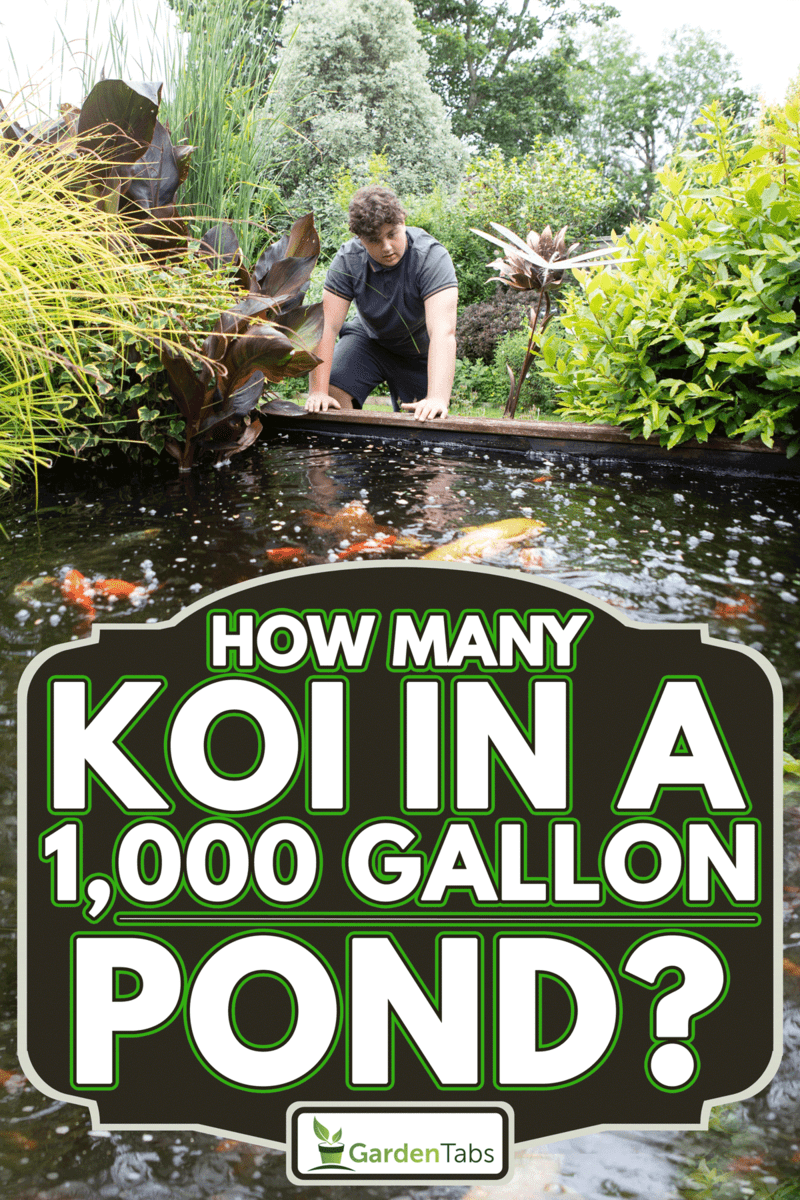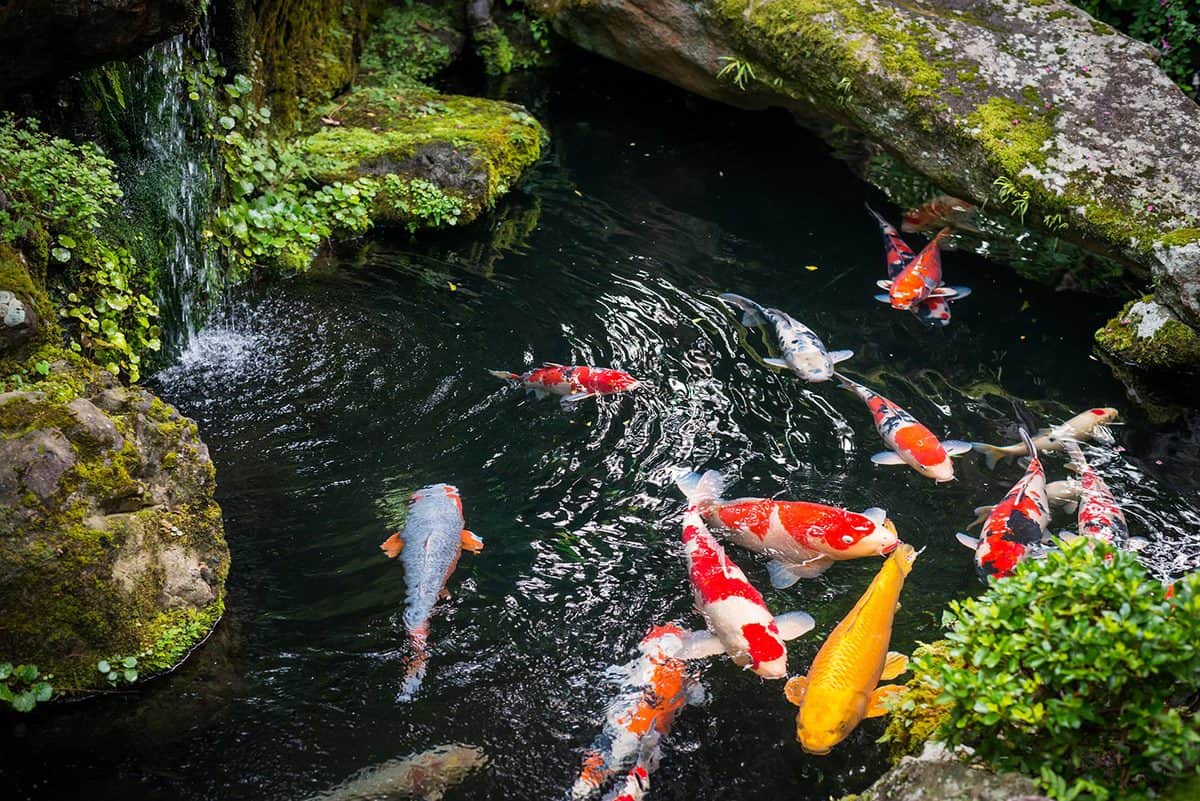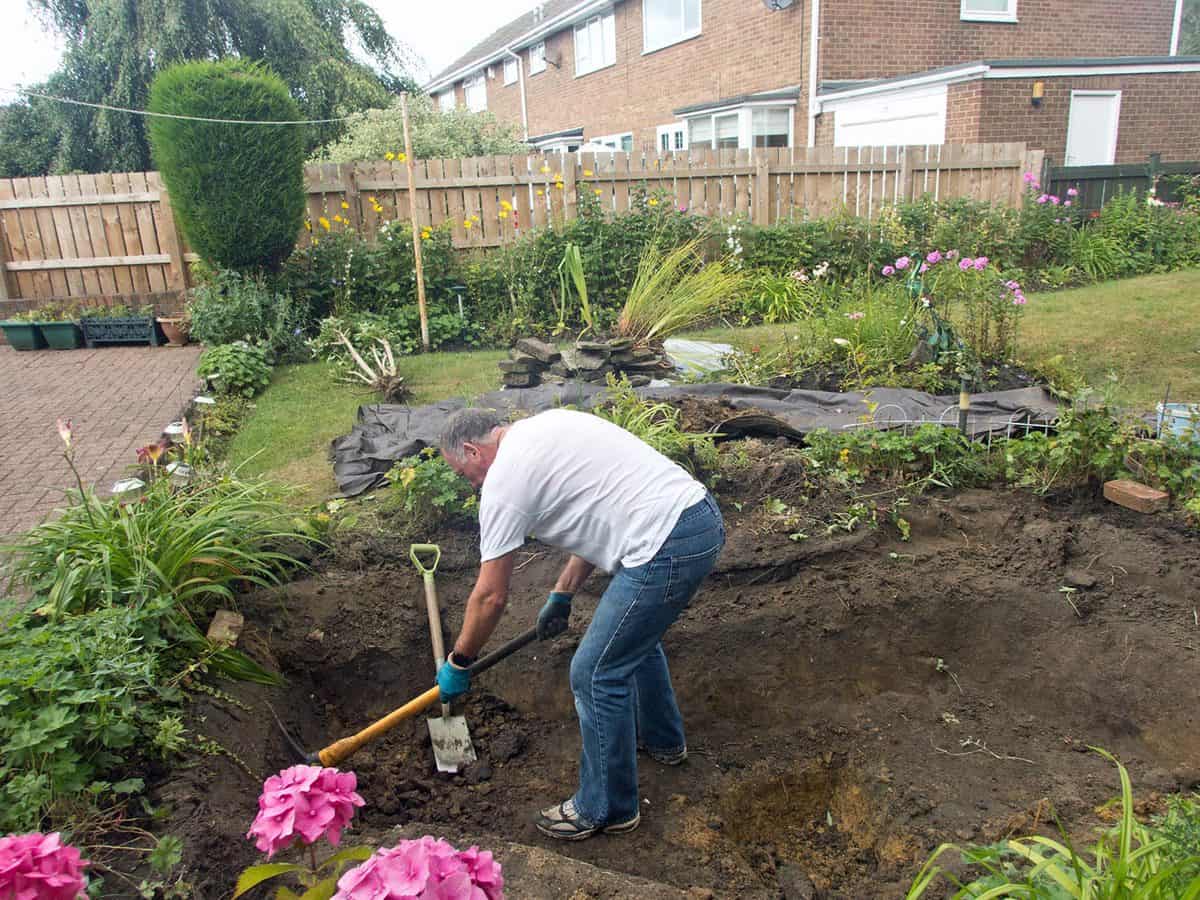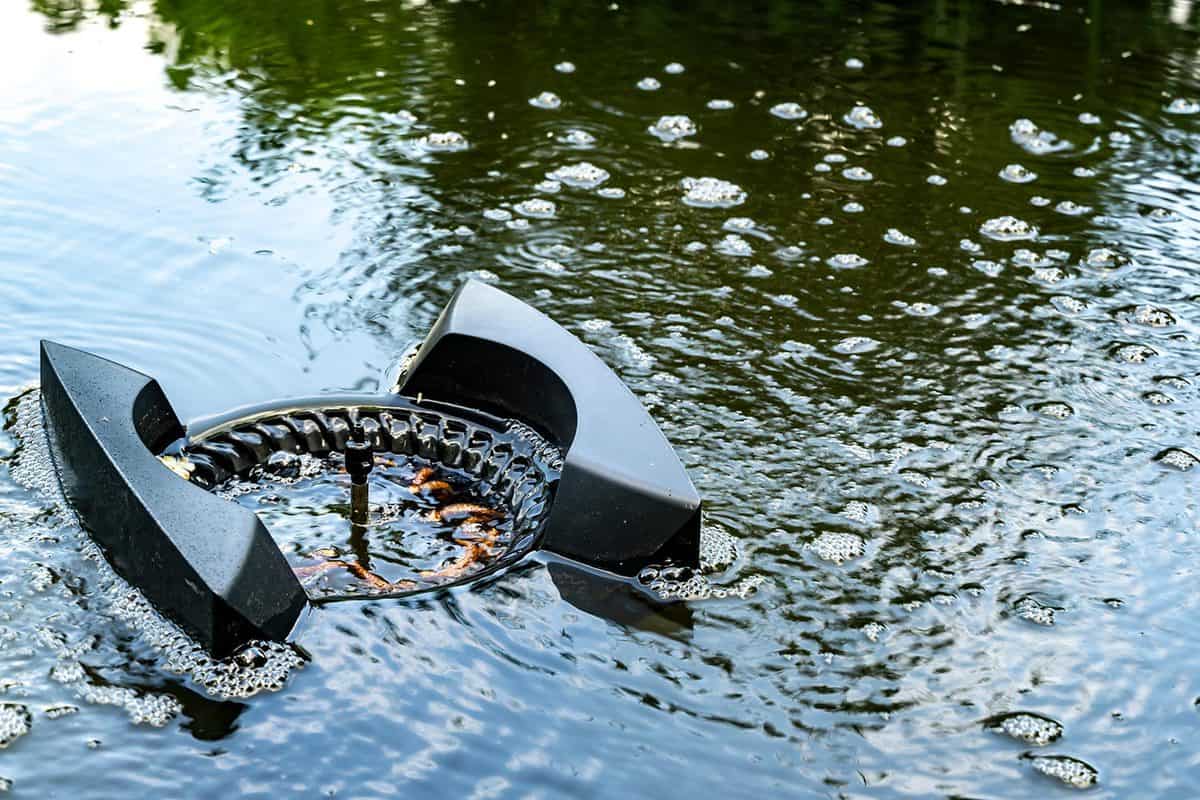Would you like to know how many Koi you can have in a 1,000-gallon pond? You must know how many Koi you can have in a 1000-gallon pond, so don't overcrowd and harm them. Well, we have researched this question and have answers for you. Let's discuss.
You can keep between two and four Koi in a 1,000-gallon pond. Generally, Koi require a minimum of 250 gallons per fish but would enjoy up to 500 gallons. Many don't realize how much water is necessary for Koi fish to be healthy.
In this article, we will learn how many Koi you can have in a 1,000-gallon pond. We will also answer other interesting related questions such as, can Koi outgrow their pond, and how do you build a 1,000-gallon pond for Koi? With that said, let's get right into it!

How Many Koi Can You Have In A 1,000 Gallon Pond?
You can keep between two and four Koi in a 1,000-gallon pond, providing that the pond is kept clean with a sound filtration system. Koi can grow over two feet long and require a minimum of 250 gallons of water.
Typically, Koi will continue to improve health and longevity-wise with water increases up to 500 gallons per fish.
A young Koi about six months old will only be six inches long and require far less than 250 gallons of water. Koi, however, grow fast and will, in a year or two, require a minimum of 250 gallons of water to be healthy.
There is a common myth that fish grow to the size of their environments. This is primarily untrue as fish will continue to expand based on genetics and not their environment.
If a fish is in an environment that is too small, it will stunt its growth. This will negatively impact the fish's quality of life, and it will cause them to die early. People often mistake the fish dying small as proof fish stay small in small ponds and then die of old age, but the small environment killed the fish.
If you keep no more than four Koi in a 1,000-gallon pond, they will be healthy and happy.
Can Koi Outgrow Their Pond?

Yes, Koi can outgrow their pond if it doesn't provide at least 250 gallons of water per fish. A common mistake Koi owners make is putting too many small Koi in their ponds.
At first, having a dozen Koi in a 1,000 Gallon pond is fine, and there would be plenty of space for the fish to be healthy and happy.
However, as the Koi become larger, they will compete for space and oxygen with the other fish. The competition for space between Koi will stunt their growth and shorten their lifespans.
The best course of action if you have too many fish in your pond is to remove some. It can often be challenging to rehome many Koi at once, so you may be required to aid the fish with oxygen and nitrogen removal while searching for a new home.
How To Assist Over Crowded Koi
If you find new homes for excess Koi in your pond but can't quickly lower the number of fish, you will need to assist with oxygen levels and nitrogen removal.
The best way to quickly increase the oxygen level in your pond is to add a bubbler. A bubbler will pump air into your pond and create bubbles. These bubbles allow oxygen to diffuse into the water.
The other area Koi that will need assistance is nitrogen removal. Waste products from Koi in an overcrowded pond will build up and eventually begin harming the fish.
The quickest way to remove nitrogen is to replace a portion of the pond water. Once a week, you should replace at least twenty-five percent of the pond water. If the water added has chlorine, add a water treatment to remove it.
How Do You Build A 1,000 Gallon Pond For Koi?

To have the maximum number of Koi in your pond, it must be a good environment. Building a 1,000-gallon pond correctly can be the difference between your Koi's healthy or hazardous environment.
Let's look into the steps required to provide a healthy environment for Koi.
Finding The Right Location
The first step is to ensure you have the right area for building a 1,000-gallon pond. A 1,000-gallon pond will measure four feet across, eight feet wide, and three feet deep. The exact dimensions of your pond don't matter as long as the pond's volume is equal to that of a 1,000-gallon pond.
It is also important that the pond isn't too close to a structure. Building a pond can increase water-based damage to nearby structures. Be sure to make your pond at least ten feet from a building.
Digging The Pond

The next step is to dig out the pond. If the dimensions you have chosen for your pond are deeper than two feet, then you will want to call a ground surveyor to ensure it's safe to dig.
There are electric wires underground in residential areas that you can mistakenly strike if you are unaware of them. These underground cables carry enough power to kill you, so we recommend having someone check for these lines before you dig.
Digging out the pond will create a lot of excess dirt. This dirt can be moved to low areas in your yard or taken to an earth disposal location.
If you can't find a good place to take your excess dirt, you can try calling local construction companies. Often construction sites need to bring in dirt and will be happy to allow you to dump excess dirt at approved locations.
Lining The Pond

It is vital when building a pond to have a waterproof layer under it to hold in water. Without a liner, water will seep through the ground, and you will have to fight to keep the water level up.
It would be best if the liner you choose is made from a single piece since it will allow it to keep in water better.
Unroll the liner across the bottom of the pond. Use rocks to hold the liner in place as you position it.
Trim the excess with a box cutter once you have the liner where you want it. Pull the liner taught, then slide the box cutter across it to cut.
Adding Sand Or Gravel
It is best to add a base for the bottom of your pond. Both sand and gravel work well, and which you choose is a matter of preference.
Start dumping wheelbarrows of sand or gravel in the center of the pond. Spreading the base from the center out will keep the liner from wrinkling.
Use the backside of shovels to spread the gravel. Avoid using rakes since their teeth can damage the liner.
Adding Water
Next, add water to your pond. Using purified water for this is impractical, so using a garden hose will work fine.
Garden hoses have a flow rate of between ten and twenty gallons per minute, depending on your home's water pressure. This means that it should take between fifty minutes and an hour and forty minutes to fill a 1,000-gallon pond.
Installing A Filtration System

A healthy environment for Koi will require filtering waste out of the water. The next step is to install your chosen filtration system.
While almost any filtration system will work, the one you have selected must be rated to handle a 1,000-gallon pond. If the filtration system you use isn't able to handle the pond's volume, then that water quality will drop, and with it, the health of the Koi.
Treating The Pond Water
Now you will want to treat the pond water, and there are two main treatments tap water needs to be suitable for Koi. These treatments are a neutralization of chlorine and the introduction of a healthy microbiome.
The first is a standard water treatment that removes or neutralizes chlorine, and the other introduces bacteria to the water to create a living microfilter.
When the water fish swim in has a healthy microbiome, the bacteria work as a filter, removing water waste.
Adding Your Koi Fish
Before adding fish, you must allow the water to circulate through the filter for a few days. This will allow most toxins to be thoroughly filtered from the water, but it will give the microbiome a chance to become established.
Not having a fully developed microbiome before adding fish is the number one cause of new tank syndrome, a syndrome characterized by the death of all the fish in a new environment likely caused by the overgrowth and collapse of the microbiome.
Start by floating the bags of fish in your pond for at least an hour. Doing this will allow the temperature change for your Koi to be gradual and less stressful.
Now, gently open the bag into the pond allowing the fish to swim free. It would be best to check on your fish every couple of hours on the first day or two since this is the most likely time a fish may die from stress.
To Finish
In this article, we learned that a full-grown Koi needs at least 250 gallons of water, which would only allow a 1,000-gallon pond to hold four Koi. We also learned that Koi could outgrow their environments and that fish growing to their container is a myth.
Remember, while a fish may not grow as large in a small pond, it isn't healthy for the fish and shortens its lifespan.
Made it to the end? Check out these helpful posts!
